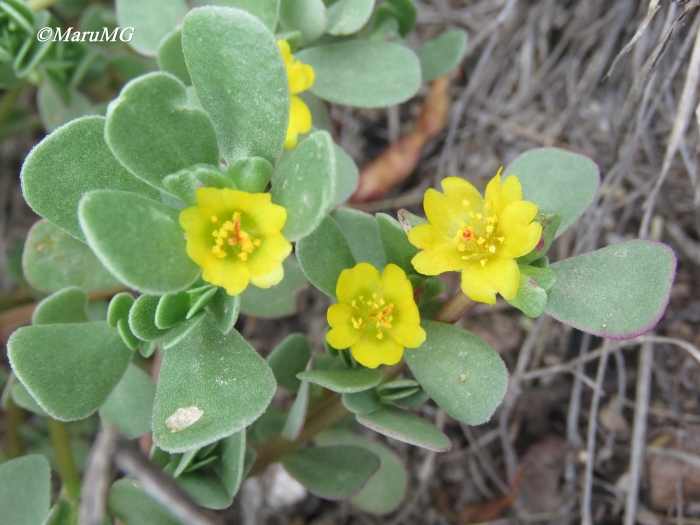Common Purslane
(Portulaca oleracea)
Common Purslane (Portulaca oleracea)
/
/

© María Eugenia Mendiola González
CC BY-SA 4.0

























Estimated Native Range
Summary
Common purslane is valued for its resilience, as it thrives in poor, compacted soils and can tolerate drought conditions. Its ability to utilize both CAM and C4 photosynthesis pathways allows it to conserve water and remain productive in hot and dry environments. In cultivation, it is often used as a ground cover or in container gardens due to its low maintenance and attractive foliage. Purslane is also edible, with a slightly sour and salty taste, and is used in salads and other culinary preparations for its high omega-3 fatty acids content. It requires minimal water once established and prefers well-drained soil and full sun exposure. While it can be a beneficial plant in the garden, purslane is potentially invasive in some regions and can outcompete native species. Gardeners should check local regulations before planting and manage its spread to prevent unwanted naturalization.CC BY-SA 4.0
Plant Description
- Plant Type: Succulent
- Height: 0.2-0.25 feet
- Width: 1-2 feet
- Growth Rate: Rapid
- Flower Color: Yellow
- Flowering Season: Spring, Summer, Fall
- Leaf Retention:
Growth Requirements
- Sun: Full Sun
- Water: Low
- Drainage: Fast
Common Uses
Drought Tolerant, Edible*Disclaimer: Easyscape's listed plant edibility is for informational use. Always verify the safety and proper identification of any plant before consumption., Fire Resistant, Groundcover, Low Maintenance, Street Planting
Natural Habitat
Originates from disturbed soils in agricultural and urban areas, as well as desert regions
Other Names
Common Names: Purslane , Pigweed , Duckweed , Garden Purslane , Little Hogweed , Akulikuli-Kula
Scientific Names: Portulaca oleracea , Portulaca aurea , Portulaca consanguinea , Portulaca cryptopetala var. poellnitziana , Portulaca dichotoma , Portulaca fosbergii , Portulaca fosbergii var. fosbergii , Portulaca fosbergii var. major , Portulaca hortensis , Portulaca intermedia
GBIF Accepted Name: